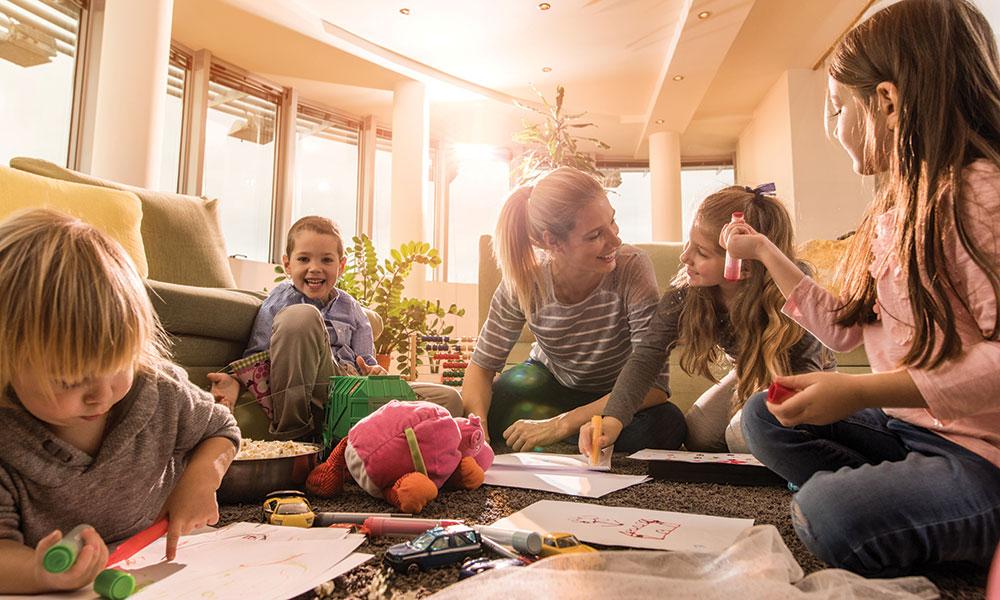
School at Home
Organize the day for school-at-home
When you’re teaching at home, you’ll be more successful if you abandon the idea of replicating a regular school day and instead, create an easy-to-learn routine.
Imagine the day in blocks, divided by mealtimes that create natural breaks. Meals could be the anchors attached to the clock, since setting a designated breakfast, lunch and dinner time can help manage childrens’ expectations.
Activities in between can be fluid to reflect that varying amount of time children need to accomplish the day’s goals. (Note: experienced homeschoolers say the kitchen should be “closed” between meals, to keep from daylong grazing that isn’t healthy and can get expensive.)
Up and at ‘em!
While you don’t have to set the alarm for an early start as you would for a typical school day, establish a routine by choosing a regular time to start the day. Student athletes might begin with a short workout. Morning chores include making beds, picking up clothes, brushing teeth and getting dressed for the day. Children also can help the household by folding laundry, emptying the dishwasher and walking the dog.
Breakfast and Planning
Whether breakfast is a communal meal fixed by mom or another family member or everyone prepares their own, begin the routine by sitting down together to pray, eat and map out the day. Imagine this as a “team meeting” where the game plan is chalked out. Each child should leave the table with a list of tasks that need to be accomplished during the day, as well as a review of longer-term assignments that might be worked on, but not completed. When the dishes are cleared and the table is clean, it’s time to start school.
Flexible school work in the morning
Students in grades five through eight are capable of a fair amount of self-directed learning, especially in literature-based courses. For assignments that involve reading from textbooks or novels, they may only need a few minutes with a parent for direction. Depending on the number of children engaged in school-at-home, parents can decide to spend blocks of time with each one individually throughout the day, working on several subjects during their one-on-one time. In addition, since several children at home may be sharing a computer, the day may look different for each child – one may be working on schoolwork for the morning while another enjoys playtime until the laptop is free.
Participate in online learning
During this unprecedented public health crisis, schools have rallied to offer continuity of learning plans and online learning opportunities for students. Many teachers are sending daily emails with assignments that are due online. Whether they’re joining a Facebook Live class or watching a lesson previously recorded and posted to YouTube, students will likely be engaged with technology for big chunks of the day. For this reason, it’s even more important that children enjoy tech-free recreation when their schoolwork is done.
Playtime, exercise, games, music and more
The school-from-home day ends much sooner than a typical school day, since working independently on assignments takes less time without the elements of structure that a school day requires. The result? You may announce “Class dismissed!” just in time for lunch, leaving the afternoon open for free play, board games, exercise, practicing an instrument or engaging in a hobby. Keep in mind that fifth- through eighth-graders are extremely social creatures who need to keep up with friends through texts, calls and social media. Having time for this is a great incentive for a productive morning of school work.



